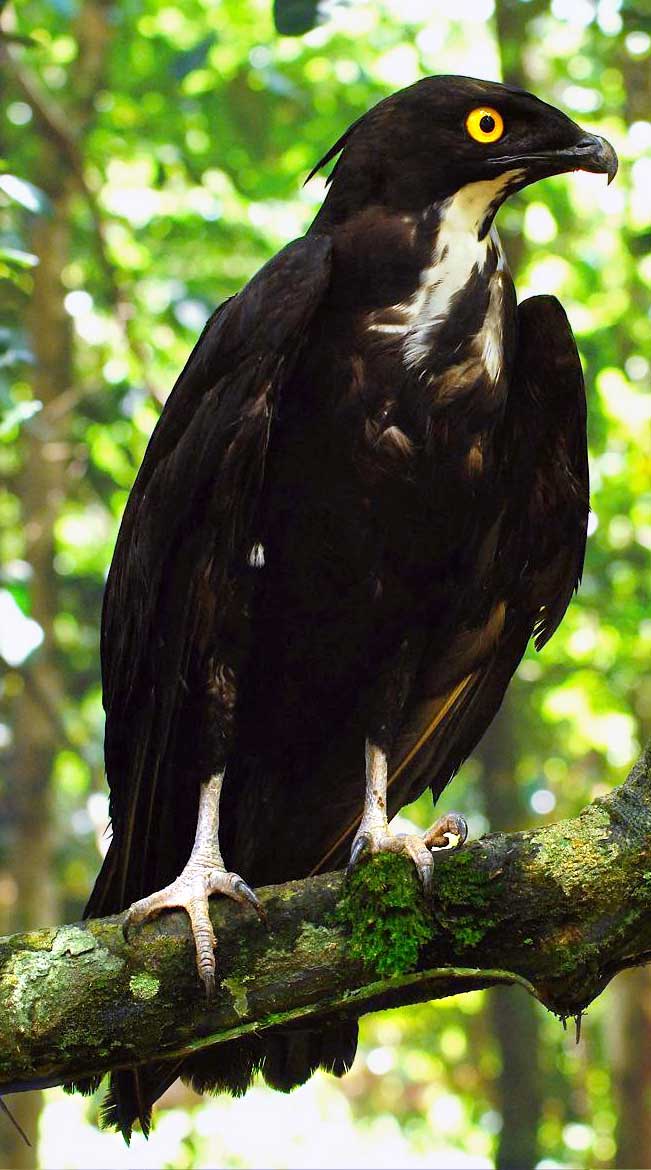Macheiramphus alcinus (*) Cladus: Eukaryota Name Macheiramphus alcinus Bonaparte, 1850 References * Revue et Magasin de Zoologie Pure et Appliqué (2) 2 p.482 Vernacular names -------------- The Bat Hawk (Macheiramphus alcinus) is a raptor found in sub-Saharan Africa and south Asia to New Guinea. It is named for its diet, which consists mainly of bats. It requires open space in which to hunt, but will live anywhere from dense rainforest to semi-arid veld. The Bat Hawk is a slender, medium-sized bird of prey, usually about 45 cm long. It has long wings and a falconine silhouette. Adults are dark brown or black, with a white patch on the throat and chest, and have a white streak above and below each eye. Juveniles are mottled brown and have more white plumage than adults. Behavior Hunting Bats are the usual prey of the Bat Hawk, although they may eat small birds, such as swallows, swifts and nightjars, or even insects. They hunt by chasing their prey at high speeds in flight. About 49% of their hunts are successful [1]. Prey is swallowed whole in midair. The Bat Hawk is crepuscular and hunts at dusk. Breeding Courtship involves many aerial displays and stunts. The nest is built with sticks gathered in flight, and is about 90 cm across and 30 cm deep[2]. The female is solely responsible for incubating her clutch. The male often shares food with her. About a month after incubation begins, the eggs hatch, and both parents help to feed their young. 30-45 days after hatching, the young fledge. They leave the nest soon after. Bat Hawks breed most years. Conservation Due to its large range and relatively stable population, the Bat Hawk is of least concern[3]. References 1. ^ H. L. Black, G. Howard, R. Stjernstedt. (1979). Observations on the Feeding Behavior of the Bat Hawk. Biotropica, Vol. 11, No. 1, pp. 18-21 Source: Wikispecies , Wikipedia: All text is available under the terms of the GNU Free Documentation License |
|

